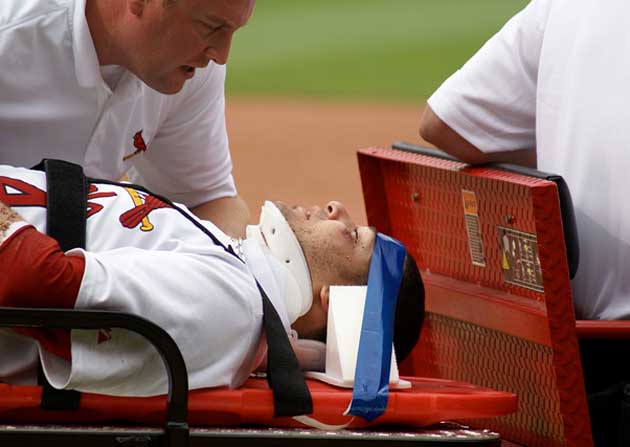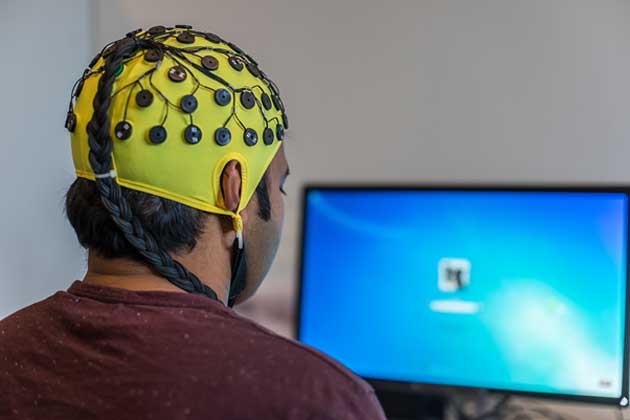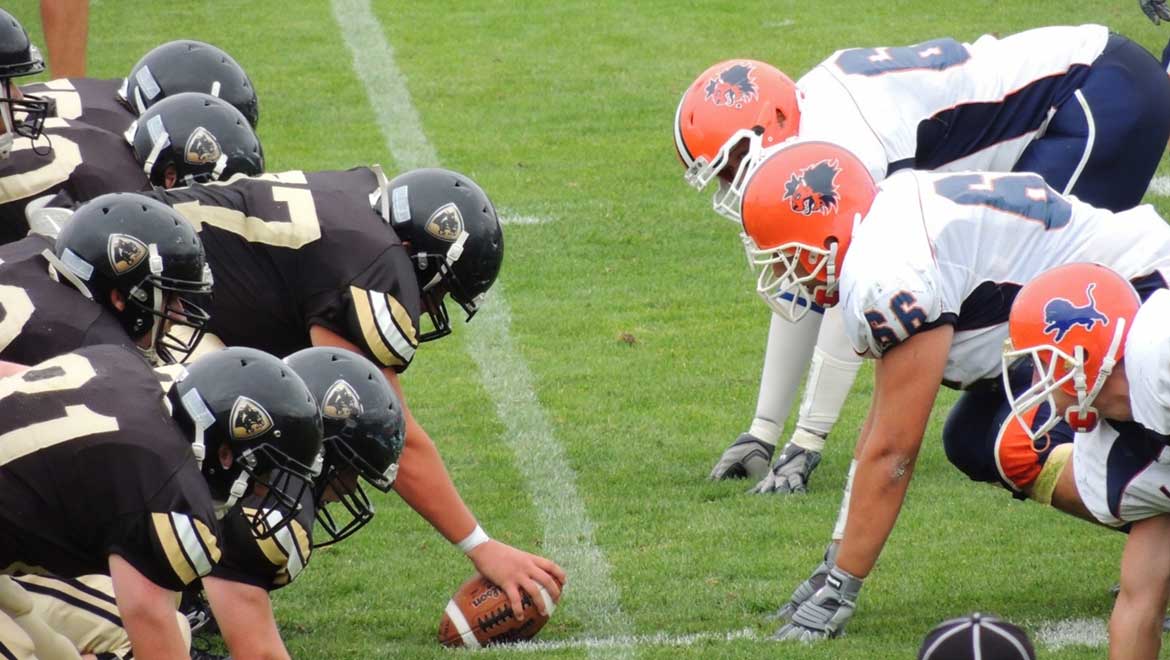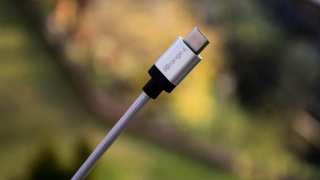Given the consistent popularity of contact sports such as rugby or American football, concussions should be a persistent concern for its players, coaches, colleagues, and fans as well.
A concussion is a condition that often results from an impact to the head or skull. It can result in immediate, transient symptoms such as light-headedness, unsteadiness, short-term memory loss and even skull fractures, in some cases. However, many clinicians and medical researchers conclude that episodes of concussion can lead to neurological problems in the longer term.
Concussion: More than a Mishap
This is why concussions are monitored, in earnest, in modern-day sports, and at greater levels than the top-flight professional leagues and championships. A concussion is now often assessed and even diagnosed at pitch-side, and players may even be barred from continuing to play after skull-impact of any kind.
Protocols such as these, which go under titles such as Head Injury Assessments (HIAs), are in place to enhance protection for the individuals from long-term brain damage. This is because concussions may be associated with the development of lingering (and possibly even life-long) consequences such as headaches, depression, anxiety, disorientation, vision loss, and cognitive dysfunction.
Accordingly, concussions are also currently known as mild traumatic brain injuries (mTBIs) and are treated as such, these days. The risks associated with mTBIs may result in a premature end to a player’s career or a chronic condition that negatively impacts their efficacy in games.
This situation is not helped by findings that players may play down the effects of their mTBIs in order to keep playing or to avoid letting their team down. Therefore, education and measures on the negative effects of such acts, and of the importance of complying with protocols such as HIAs, is of critical importance.
HIAs may involve psychological and neurological tests such as the Sports Concussion Assessment Tool (SCAT3), CogSport or the Balance Error Scoring System (BESS). However, they may rely on self-reports for their efficacy, which may be affected by a player’s lack of will (or ability, in some cases) to admit to their symptoms or full extents.

HIAs may result in measures including the permanent removal from play during a match, following the detection of a concussion. (Source: Public Domain)
New Ways of mTBI Monitoring
Despite measures such as HIAs, and additional anti-mTBI training and techniques, the rate of concussion on the field remains high, and is, indeed, sometimes unavoidable.
Therefore, one neurologist from Montgomery, Alabama, decided to develop a measure to monitor and track concussions in players, and it was Dr. Rosa Bell conducted the research at the Alabama State University’s football stadium.
Bell's hypothesis was that mTBI could be detected via electroencephalography (EEG). This healthcare metric is typically recorded using non-invasive electrodes, arranged strategically in a skull-cap so that it can pick up waves associated with electrical activity in various parts of the brain.

An example of electroencephalographic equipment. (Source: ulrichw/Pixabay)
Hence, Dr. Bell applied such a cap to 22 ASU players prior to their season of college football. This provided a baseline EEG, against which she compared readings taken immediately after a player was obliged to leave the pitch for an HIA-type assessment.
After 111 such readings, it was reported that this protocol resulted in a working method to analyze EEG variations associated with mTBIs in real time and at pitch-side.
Therefore, this new system, which has been patented worldwide, may one day form the basis for improved and more accurate HIAs in the future.
This novel system may also benefit groups and interests besides those involved in contact sports and their support structures. Children, teenagers, younger men and people involved in other types of high-impact activity are also at relatively high risk of mTBI. They may require improved concussion detection and assessment in the long term.
Furthermore, those at risk of repeated concussions are regarded as being in particular need of concussion monitoring, in case of more severe neurological injuries. They may be significantly detrimental to life quality or even survival, in some cases.
Other mTBI Assessment Options
The new, EEG-based system developed at ASU may also have the advantage of being objective, quantitative and of continuity in the long term.
This technique may be more amenable and feasible in its target environment compared to similar scientific methods of mTBI assessment, some of which include clinical techniques such as magnetic resonance imaging, computed tomography and other forms of non-invasive imaging. These methods are highly accurate and sensitive to conditions such as mTBI, however, they may be expensive and unwieldly to bring to a game of any kind.
Other emerging methods available to combat and study mTBI include the use of electrovestibulography (a noninvasive test of the brain’s ‘balance center’) and big data. However, both these methods are also still in developmental stages and have issues such as the non-standardization of the data involved, and the early stages of their own clinical testing.
On the other hand, Dr. Bell’s new system is not publicly linked to any full-scale clinical trial process. Therefore, it may be some time before it is approved for use by major organizations for sports or in any other domains.
Then again, time may tell how much this new real-time EEG protocol may help in assessing mTBIs and those at a risk of such injuries in the future.
Top Image: American football players are, despite the use of helmets, at a risk of mTBIs. (Source: Public Domain)
References
Montgomery neurologist develops groundbreaking concussion technology, 2018, WAFF 48, http://www.waff.com/2018/11/11/montgomery-neurologist-develops-groundbreaking-concussion-technology/, (accessed 12 Nov. 18)
IRFU Guide to Concussion, 2018, Irish Rugby, https://www.irishrugby.ie/downloads/IRFU-Guide-to-Concussion.pdf, (accessed 12 Nov. 18)
D. V. Agoston, et al. (2017), ‘Big Data in traumatic brain injury; promise and challenges’, Concussion, 2 (4), pp. CNC44
K. M. Barlow. (2016), ‘Postconcussion Syndrome: A Review’, Journal of Child Neurology, 31 (1), pp.57-67
V. Rao, et al. (2017), ‘Neuropsychiatric aspects of concussion: acute and chronic sequelae’, Concussion (London, England), 2 (1), pp. CNC29-CNC29
A. Suleiman, et al. (2017), ‘Quantitative measurement of post-concussion syndrome using Electrovestibulography’, Scientific Reports, 7 (1), pp. 16371-16371







No comment